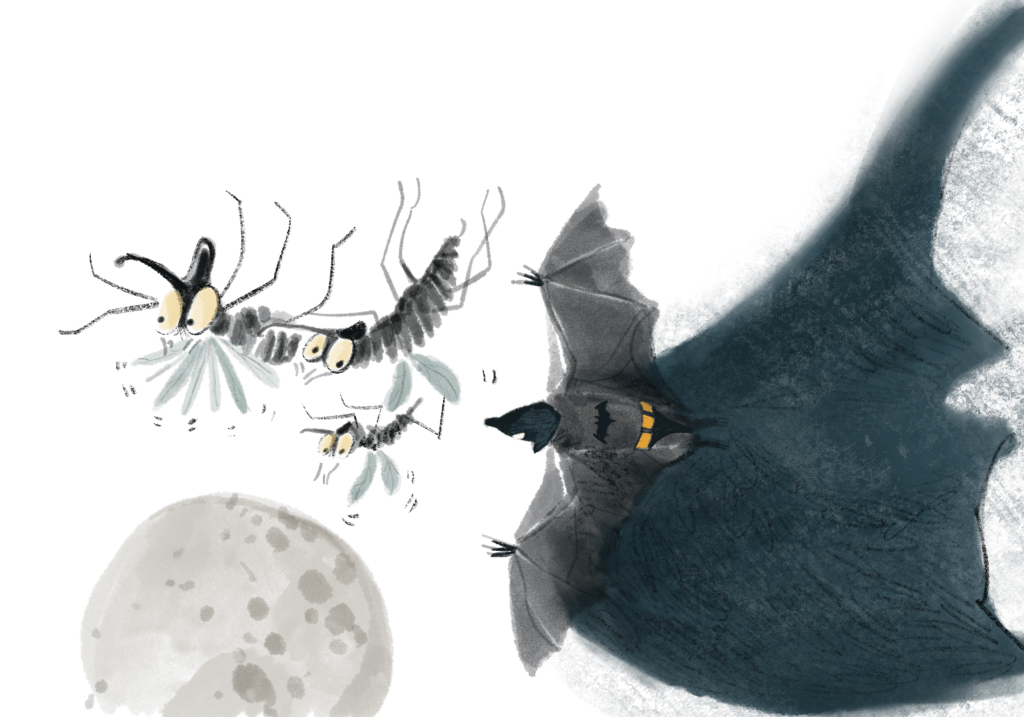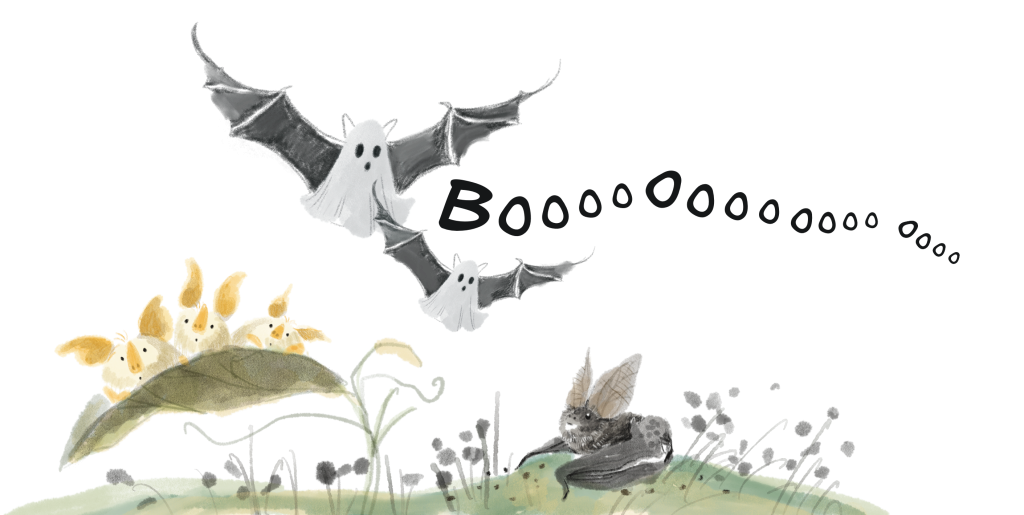Bats contribute to some pretty special aspects of our natural environment. In fact, they may have more of an impact on your daily life than you realise. Across the world bats consume tonnes of flying insects every night and help to control pests like mosquitos. Bats are also key pollinators for many types of fruit including banana and mango. Like us, bats are mammals, they have hair on their bodies and milk glands from which they feed their young. But they are quite different from humans in a few unique ways. Bats have wings which they use to fly and many bat species use echolocation to navigate their way through the night sky.
Bats even inspired one of the most popular superheroes of all time: Batman.

Where do bats live?
Bats are found almost everywhere across the world, except for Antarctica and some parts of the Arctic circle. From dense tropical rainforests to deserts and every habitat type in between, bats can survive almost anywhere. To make a suitable home, bats need food, water and shelter—much like us humans. Most bats roost (sleep) during the day, hanging upside down by their feet. Bats roost in some very interesting places, including caves and rock crevices, different parts of a tree (such as under the bark, in the foliage, or in a hollow), in abandoned bird nests and termite mounds. They are also known to use old buildings and bridges as roost sites. Some brave bats have even been found roosting in crocodile burrows!
Navigating the night
When bats emerge from their roosts at nighttime, they use their exceptional flying skills to search for food and water. They have long limbs extending from their bodies that have a similar structure to the human hand and leg. A soft membrane of flexible skin extends over these limbs to form a pair of folding wings. In the air, bats rely on either sight or sound (echolocation) to search for food, which includes nectar, fruit, flying insects, ground-dwelling insects, aquatic insects, small fish and other animals.
| Scientific fact: ‘Echolocation’ is a process by which the bat emits an ultrasonic sound and listens for its echo to find an object (usually its prey). These sounds are at such a high frequency that most bat calls can’t be heard by humans at all! Many whale and dolphin species also use echolocation to find food and to navigate. |
Types of bats: Megabats and microbats
Megabats
Most megabat species are large (well, large for a bat), they have big round eyes and a long snout, making them look a little like an upside-down fox. Many megabats eat fruit and sleep during the day while hanging from large trees. Megabats have excellent sight and smell which they use to locate their favourite food, fruit and nectar, and to navigate through the night sky.
Microbats
Microbats—you guessed it—are micro-sized compared to megabats. Microbats usually have very small eyes, large ears, and use their strong sense of sound to navigate through the sky. Many microbats feast on huge numbers of insects, but some eat fruit, fish and even frogs! Echolocation is used by most microbat species, and unlike megabats, sound is their dominant sense. Contrary to popular belief, bats are not blind. However, microbats have a different eye structure than humans do and don’t see the world in the same way.
Let’s meet a few bat species!
The fantastic flying fox
The spectacled flying fox (Pteropus conspicillatus) is a megabat species found in the tropical rainforests of North Queensland in Australia. This species feeds on more than 35 different types of fruit. Spectacled flying foxes forage by removing fruit from trees with their sharp teeth before flying off some distance to eat. Seeds fall from the fruit as it is being eaten and land onto the rainforest floor. A few weeks or months later, new rainforest trees germinate from the seeds dropped by these bats.
Bats with mohawks
The long-crested free-tailed bat (Chaerephon chapini) is an insect-eating microbat found across central Africa. Males of this species have a very interesting way of impressing the ladies. When they reach maturity, males grow a long white mohawk on top of their heads. Lady bats choose a mate with the mohawk that they like best.
Bats that make tents
In the forests of Central and South America, lives a very clever little microbat. The tent-making bat (Uroderma bilobatum) is not content to roost just anywhere—they specifically like to sleep in tents. Using the leaves of a banana tree, tent-making bats score along the central vein of a large leaf with their sharp teeth until either side of the leaf is pulled into a triangular tent shape. These bats roost in their tents in small groups, protected from the weather and safe from the eyes of predators.
Scary bats
If the name ghost bat sounds scary to you, you’d be right to trust your instincts. Ghost bats (Macroderma gigas) are indeed scary. If you happen to be a tiny bird or a small mammal, such as a mouse or another bat, then stay away from ghost bats! This species of microbat is found across tropical northern Australia and roosts in caves during the day. At dusk, they emerge and swoop down on their unsuspecting prey (mainly birds, small mammals, and large insects), which they carry back to their cave and devour.

Crawling bats
A very unusual species of microbat is found on Codfish Island in New Zealand. The New Zealand lesser short-tailed bat (Mystacina tuberculata) can fly like all other bats, but it has a way of foraging for food that is unlike any other bat species. This bat has very large feet and claws, which it uses to crawl along the forest floor to forage for fallen fruit and ground-dwelling insects.
Building bat homes
The golden-tipped bat (Kerivoula papuensis) is an Australian microbat species that feeds on small spiders and roosts in abandoned birds’ nests.
Much of the rainforest habitat of the golden-tipped bat has been lost due to urban development. The remaining habitat was further reduced by horrific wildfires that raged across eastern Australia in 2019 and 2020. To help this special species recover from the effects of the fires, an Aboriginal community group have been weaving replacement bird nest roosts from natural fibres. These artificial nests have been placed amongst rainforest trees to provide much-needed new bat homes.
Keep your hands to yourself please!
Like most wild animals, bats and their faeces can carry harmful and, in some cases, deadly diseases. Bats are animals to be appreciated from afar and never played with. Wild animals, including bats, must never be touched or consumed.
| Scientific fact: The transfer of a disease from an animal to a human is called zoonosis. The Australian bat lyssavirus is a good example of zoonosis. |




